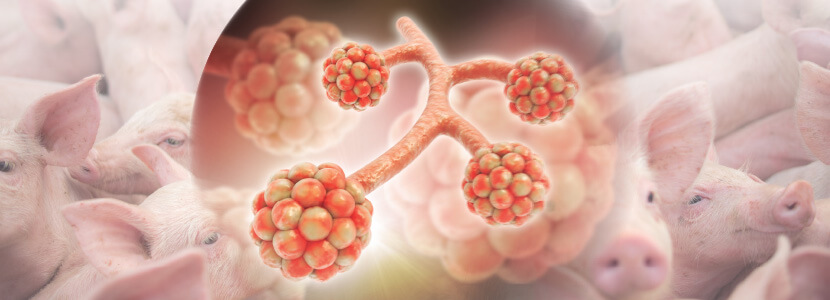Breathing problems in pigs are usually caused by multifactorial processes (infectious agents, nutrition, handling, type of facilities…).
A differential diagnosis is essential in order to arrive at the resolution of the case and establish properly the treatment and control measures
Table 1 lists the main infectious agents and diseases associated with respiratory symptoms, both of the upper respiratory tract (rhinitis) and of the lower respiratory tract (Porcine Respiratory Disease Complex, PRDC). It describes the most likely age of presentation of each disease, although it may vary according to different factors: epidemic outbreak or endemic process, maternal immunity, environmental conditions, co-infection with other agents, etc.
A good anamnesis, clinical examination and macroscopic evaluation of lesions will allow to limit the differential diagnosis and to select the samples and laboratory analysis to reach an accurate diagnosis. In Table 2, a differential diagnosis is made based on symptoms and lesions, relating it to the appropriate samples and techniques for laboratory diagnosis.
Keep up to date with our newsletters
Receive the magazine for free in digital version
REGISTRATION
ACCESS
YOUR ACCOUNT
LOGIN
Lost your password?

